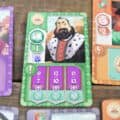Video Transcript
So have you ever wondered why games of twenty questions always starts with “is it an animal, a vegetable, or a mineral?” I remember being really confused by that question.
But somehow, it has always found a way to insert itself at the start of every game of 20 questions. But why? Why such a weird question?
There are so many things that didn’t fall into these categories. How often would someone even choose a mineral? How many minerals can the average person even name? Well, it turns out the question isn’t as arbitrary as I thought it was. It has history going back nearly fifteen hundred years.
But to give it context, let’s jump back even further.
The first attempt to classify everything was done by Aristotle. He believed that everything was derived from one of the four elements: Earth, water, fire, or air. For example, a house is made of bricks, bricks are made of clay, clay is made of mud, and mud is made of Earth and water. Everything could be traced back to the the elements like this. Aristotle made his theory from very simple observations: objects had some combination of the properties: wet, dry, hot and cold, and those properties lined up with the four elements. Fire was hot and dry. Earth was cold and wet. Etc.
But Al-Razi, an alchemist from the Middle East born in the Middle Ages, didn’t agree with Aristotle’s system.
He had a much more nuassainced approach. Aristotle had no concept of the scientific method, but Al-Razi did. And while he conducted his experiments to transform base metals into gold, he came up with many properties that couldn’t be explained by Aristotle’s elements: oiliness, flammability, salinity, etc. Aristotle’s elements couldn’t really explain these things. Which of the four elements did oiliness arise from?
So, Al-Razi eventually discarded Aristotles system entirely. You can’t determine what something is made of based on how cold it is. Seems obvious, but ya know, thinking real hard only gets you so far.
Now, Al-Razi knew he didn’t have the knowledge to figure out what everything is actually made of, so his response to Aristotle pivoted: instead of classifying matter by what it’s made of, he can classify it by where they originated.
And what he came up with was: Animal, vegetable, mineral and derivative. Animal is pretty obvious, vegetable is any thing plant derived. Mineral stands for anything that comes from the Earth. Derivative was kind of his catchall for chemicals that didn’t have an obvious origin.
But at the same time, his approach layed the foundation for organic chemistry, in a time where his contemporaries were still using magic to explain most things.
But a medieval alchemist’s research doesn’t explain why it’s become such a mainstay in a modern parlor game.
Al-Razi documented his work methodically, and eventually, his research made its way to Europe. And in the 1800’s, a Swedish botanist named Carl Linnaeus, used “animal, vegetable, mineral” as the basis for his sorting system for plants and animals.
His chief innovation was to make the sorting hierarchical. Kingdoms were up top, followed by Phylum, class, order, genus, and finally species. And that system, is basically the same one we use today.
Only, you might be wondering why mineral was on that list at all, considering minerals aren’t alive, and Linneaus’s system is how we categorize living things these days. Well, his system actually thought rocks did have a sort of reproduction process, where multiple kinds of rocks would reproduce to make new, baby rocks. Basically rock sex. Of course, Linneaus wasn’t right about everything.
Later on, minerals were removed eventually, and fungi, bacteria and the protists kingdoms were added.
But during Linnaeus’s life, his “animal, vegetable, mineral” classification system became famous, and he had become somewhat of a celebrity himself. And it was around the same time that the “game of twenty”, a parlor game, started to become popular.
And because these sorts of games were primarily played by upper class people, who wanted to show off their education and cleverness, what better way to do that than using the popular science of the day?
So the first question became, “is it an animal, a vegetable or a mineral?” and since it wasn’t a yes or no question, it became codified into the game’s rules.
Now, let’s play a quick game of 20 questions. Is it an animal a vegetable or a mineral? Is it you subscribing to my channel? Is it you subscribing to my channel and clicking the bell? Alright, Alright I won’t push my luck with the bell, no one really clicks on those anyways. But thanks for watching.

